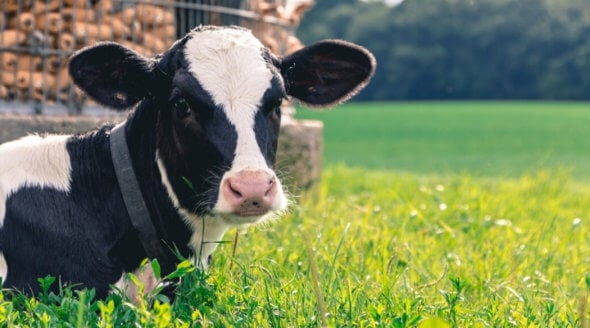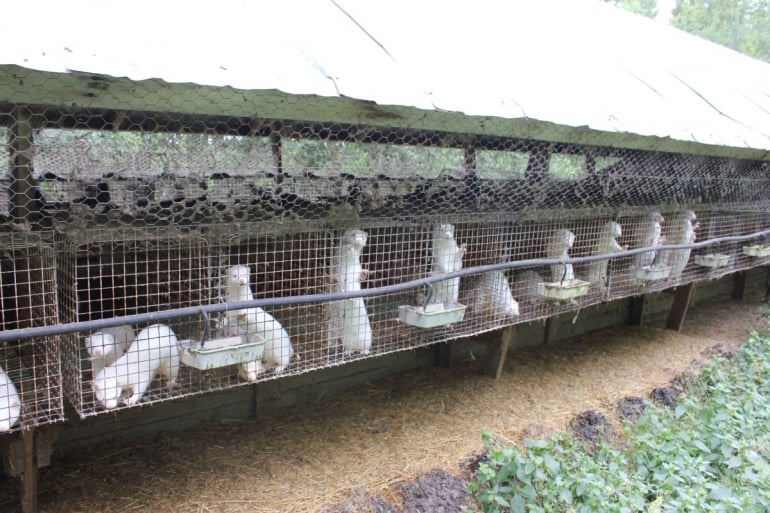The Barbaric Fur Trade
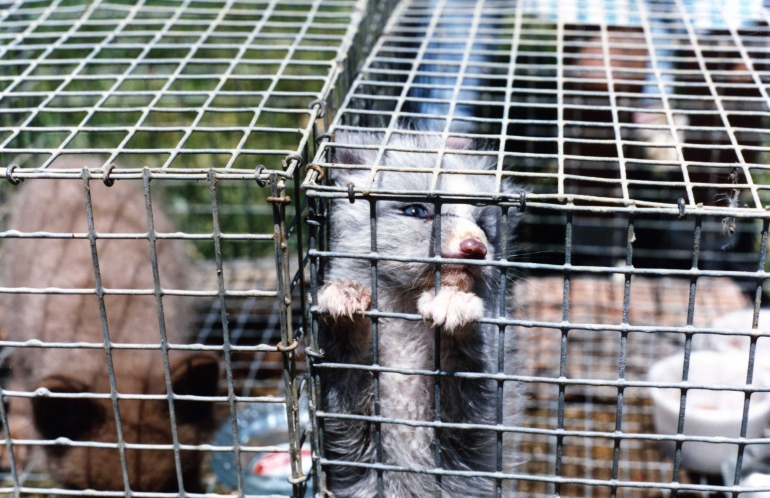
The fur industry has long been a byword for cruelty, killing millions of animals a year in horrific ways in order to profit from their skins.
Fur Farms
Row upon row of cages stacked on top of each other in foul-smelling sheds that resound with the screams of distressed animals – this is a fur farm.
More than 85 per cent of the fur sold today comes from such facilities, where minks, foxes and other animals are locked up for their entire lives before being killed for their skins. Living in these conditions – far from their natural environment and with no opportunity to play, hunt, jump or run – often drives inquisitive, intelligent wild animals insane during their short lives. Fighting, self-mutilation and cannibalism are common on fur farms.
Numerous investigations of fur farms across many fur-producing countries have documented atrocities, including animals with eye infections, sores on their feet from filthy wire cages, missing limbs and festering, untreated open wounds (some so deep that their brains are visible); babies kept in cages with the rotting corpses of their mothers; and animals who exhibit neurotic behaviour as a result of psychological damage.
The methods used to kill animals on fur farms include vaginal or anal electrocution, gassing and poisoning. All are gruesome, painful and terrifying for the animals.
In 2000, fur farming became illegal in the UK, but it still takes place across Europe and the rest of the world, inflicting intense suffering on animals.
Trapping and Clubbing
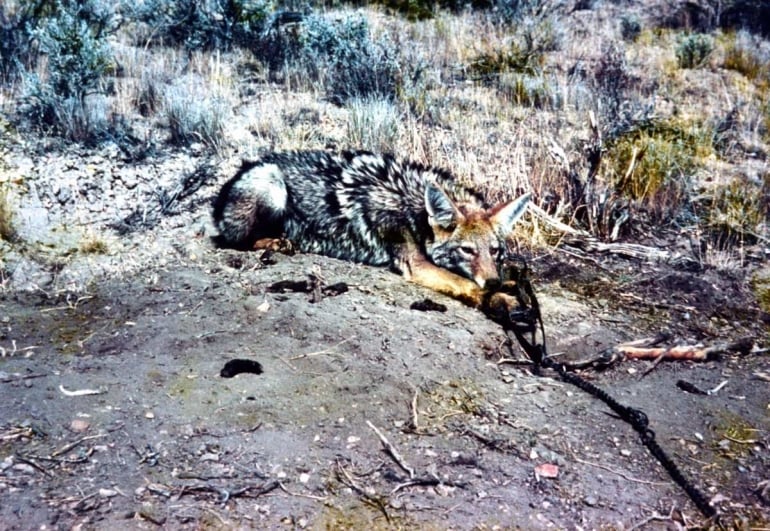
Every year, trappers worldwide kill millions of raccoons, coyotes, wolves, bobcats, opossums, nutrias, beavers, otters and other fur-bearing animals for the clothing industry.
Animals who are trapped in the wild can suffer for days from blood loss, shock, dehydration, frostbite, gangrene and injuries sustained in attacks by predators. Mother animals caught in traps sometimes chew off their own limbs in a desperate attempt to get back to their babies.
Trappers may use steel-jaw traps that slam down on animals’ legs, often cutting to the bone; Conibear traps that crush their necks with 90 pounds of pressure per square inch; or water-set traps that leave beavers, muskrats and other animals struggling for more than nine agonising minutes before drowning. Steel-jaw traps are so inhumane that they’re illegal in the European Union – but fur from animals caught in these vicious devices can still be imported and sold here.
Trappers have been documented beating or stamping animals to death – killing methods that cause immense distress to the animals but are used because they leave most of the fur intact.
“I cannot forget the bewildered look on the trapped raccoon’s face as he is smacked in the head with a stick and then shoved under the water by the trapper’s boot, only to reemerge gasping for air and grasping the end of the stick with his tiny paw as if pleading for mercy.”
– Will Travers of Born Free USA, on trapping industry footage
During the annual Canadian seal slaughter, sealers shoot or repeatedly bludgeon tens of thousands of baby harp seals – using clubs tipped with metal hooks – so that they can sell the animals’ soft pelts.
Whose Skin Are You In?
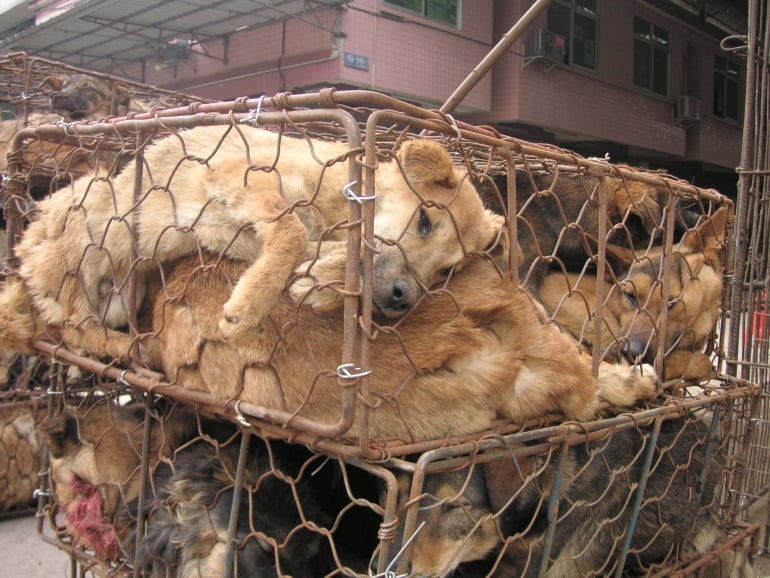
If you buy fur, there’s no way of telling whose skin you’re really wearing.
In China, where there are no penalties for abusing animals on farms, the fur industry’s victims include dogs and cats, some of whom may be abducted family companions. Shocking footage from Chinese fur farms reveals that animals used for fur are killed in painful and terrifying ways, with workers bludgeoning raccoon dogs, cutting off rabbits’ heads and ripping the skin off live animals as they writhe in pain, still conscious.
Deliberate mislabelling and a lack of accountability in international supply chains mean that it’s often virtually impossible to trace the origin of a fur product – sometimes, real fur is even labelled as faux fur.
Environmental Damage
There’s nothing “natural” about people wearing fur, and at every stage of production, fur farming harms the planet. Dead bodies naturally rot, so fur producers use a cocktail of heavy-duty chemicals such as formaldehyde and chromium to prevent putrefaction. That doesn’t sound very glamorous, does it?
In fact, the World Bank has ranked the fur industry as one of the worst industries in the world for toxic metal pollution. The hazardous substances used to treat fur can cause devastating damage to water supplies, and they also pose serious health risks to workers in fur-processing plants, ranging from skin maladies to cancer.
Like other forms of factory farming, fur farms focus on squeezing the maximum amount of profit from the animals they use, with little regard for welfare or environmental impact. Mink farms, for example, generate tonnes of phosphorus-containing faeces which can run into nearby streams and rivers and cause harmful emissions of nitrous oxide and ammonia.
In fact, an independent 2013 study found that real fur always has a higher environmental impact than faux fur and other non-animal textiles – in some cases as much as 10 times higher.
“[F]or all the environmental impacts investigated the natural fur product has a greater impact than the faux fur alternative.”
– CE Delft Report, 2013
We’d Rather Go Naked
Celebrities, models, designers and the vast majority of the British public stand firmly against the fur industry. Many high-profile people have starred in PETA’s iconic anti-fur campaign – including Eva Mendes, Twiggy, Lucy Watson, Tim Howard and Simon Cowell – and 95 per cent of Brits have said they would never wear real fur.
Calvin Klein, Stella McCartney, Vivienne Westwood and Tommy Hilfiger are among the many designers who never use fur in their collections, and the majority of high-street stores, including Topshop, AllSaints and ASOS, are also fur-free.
Thanks to widespread awareness about how cruel the fur trade is, there’s now a stigma attached to wearing fur. It’s only bought and worn by a tiny minority of people who cling to a gruesome and archaic notion of glamour or are desperate to draw attention to themselves – for all the wrong reasons.
What You Can Do
- Speak out! If you see real fur for sale anywhere, ask to speak to the store’s manager and explain how disgusted you are by the product.
- If you spot a fur-wearer when you’re out and about, try to engage the person in polite conversation about why there’s nothing glamorous about clothing yourself in dead animals’ skin.
- Donate any fur coats that may be lingering in your closet to PETA. We’ll put them to good use in eye-catching events or as clothing or bedding for those in need (after marking them to ensure they’ll never end up back on the market, of course).

